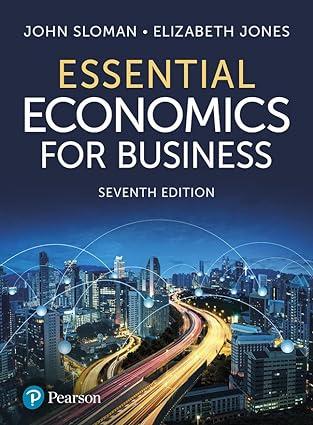Consider the following sequential game. Mr. New-Entrant is about to enter a market where there is an
Question:
Consider the following sequential game. Mr. New-Entrant is about to enter a market where there is an established firm run by Mrs. Incumbent. Mr. New-Entrant has to decide whether to enter the market aggressively (with deals and lots of advertising) or enter more passively. Once Mr. New-Entrant has made his decision and entered the market, Mrs. Incumbent has to decide between acquiescing (accepting that there is a new competitor) and fighting (trying to drive Mr. New-Entrant out of the market.) If Mr. New-Entrant decides to use aggressive tactics, he will make £2m profit if Mrs. Incumbent acquiesces and £0.75m profit if she fights, while Mrs. Incumbent would make £1m profit is she acquiesces and £0.75m if she fights. On the other hand, if Mr. New-Entrant enters the market passively and Mrs. Incumbent acquiesces, both will make £0.5m. If Mrs. Incumbent chooses to fight despite the passive entrance, she will make £2m profit, while Mr. New-Entrant will make £1m.
(a) Draw the game tree, clearly identifying who is the first mover, what each player’s actions are and what their payoffs are.
(b) What is the Nash equilibrium? (Hint: there is more than one.) Which Nash equilibrium do you think is the most likely to occur and why?
(c) If Mrs. Incumbent threatens that she will fight irrespective of the tactics Mr. New-Entrant uses, should Mr. New-Entrant believe that this threat is credible? Should this influence his decision?
Step by Step Answer:

Essential Economics For Business
ISBN: 9781292728940
7th Edition
Authors: John Sloman, Elizabeth Jones





